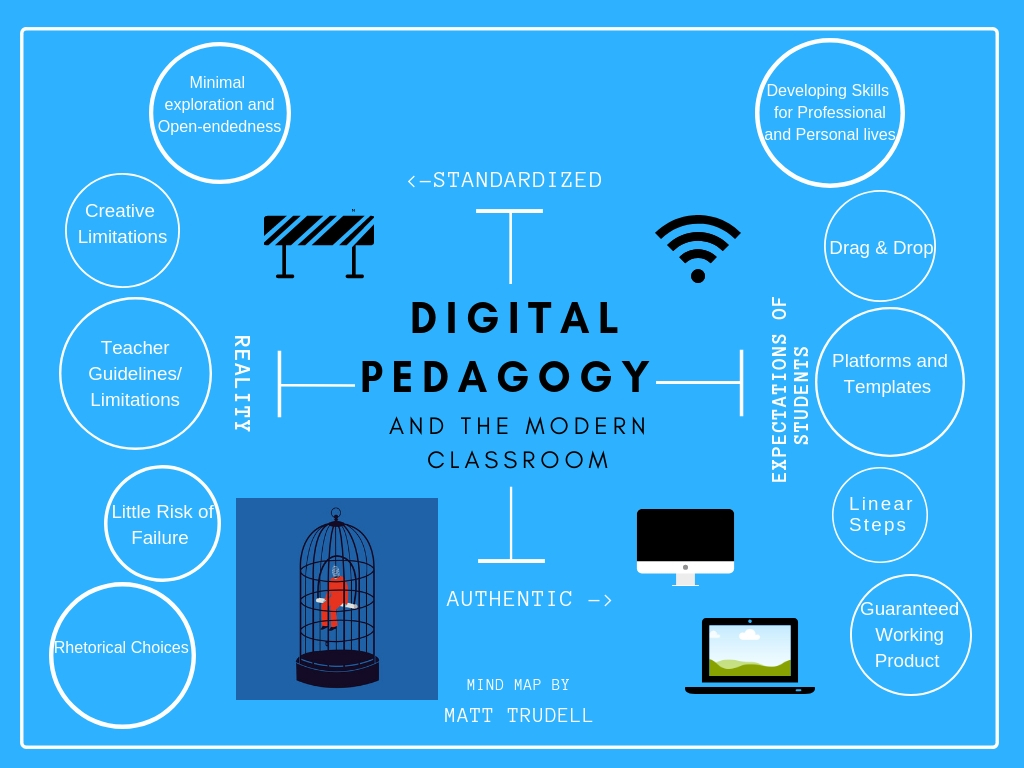Looking at “Digital Ghosts in the Modern Classroom“, the author dives into the effects that using template and drag-and-drop style of instruction with many technological platforms can often limit our students creativity and it teaches them the uniform, standardized approach to education we have used in our classrooms for ages.
This can become a bit of a bore in the classroom…

The template/shortcut options can relay back to having a narrow or a singular right answer after following rigid, structured guidelines. Thus, “ghosting” progression in the students ability to show a sense of discovery or exploration when approaching activities or assignments.

Moving forward, we must adopt a more authentic experience for students in the classroom… Get students out of their comfort zones and give it a try!

We, as educators must move towards a less standardized approach when it comes to giving out activity guidelines or restrictions. I believe introducing students to software programs and computer languages in order to avoid restricting their choices, creating a much more diverse finished product among all students, and letting their creativity and problem solving skills reflect through their learning.
In my own personal experience, I had the chance to work with students using the Piktochart and Mindmap platforms to develop their own inforgraphics regarding health-related topics. This was an excellent opportunity for me to see which students would take the opportunity to show me their creativity and really make the assignment their own. The end result? many students opted to choose comfortable layouts and familiar icons or styles based on the templates the programs provided. When I urged several students to think outside of the box and try different features that were available to them, many struggled with the lack of strict, easy to follow guidelines and it was evident many of them were lacking the problem-solving skills required to do what I was asking. By taking away the template, drag-and-drop approach at an earlier age, and showing students more advanced computational mathematics coding platforms, I believe we will afford students with the opportunities to develop their creative sides rendering them much more proficient in technology and digital media in the future. Working with the younger students who had already been practicing with different open-ended coding platforms, you could already see an increase in the comfort level of working on something with little restriction or guidelines, this is what we need for our students!
